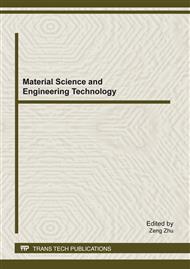p.141
p.147
p.154
p.160
p.164
p.169
p.173
p.180
p.185
The Reverse Design and Injection Molding Analysis of Plastic Product Based on Imageware and Moldflow
Abstract:
The process and method of reengineering design are introduced in the paper. Using the reverse engineering Imageware software, the helmet points cloud data were processed, the characteristic curve net was divided and the curve surface was reconstructed. Then the 3D model of the helmet established with Imageware was input in Moldflow. With the help of Moldflow simulating analysis software, injection molding is simulated and analyzed by calculated for helmet. According to the result of analyze fill, cool and warp, the structure of mould is optimized and designed and high quality product is obtained. The fast design for product and mold is realized.
Info:
Periodical:
Pages:
164-168
Citation:
Online since:
February 2012
Authors:
Price:
Сopyright:
© 2012 Trans Tech Publications Ltd. All Rights Reserved
Share:
Citation:


